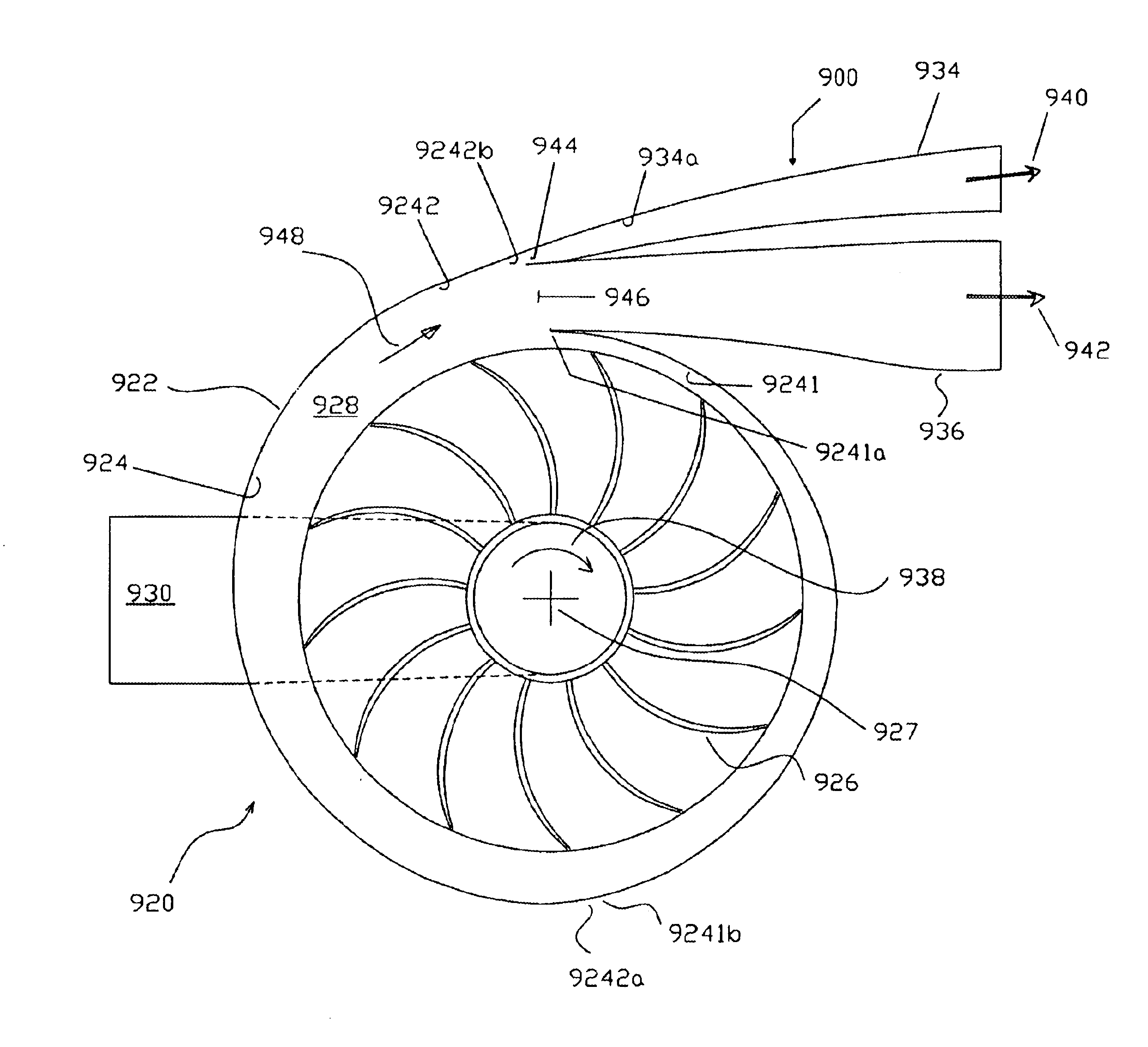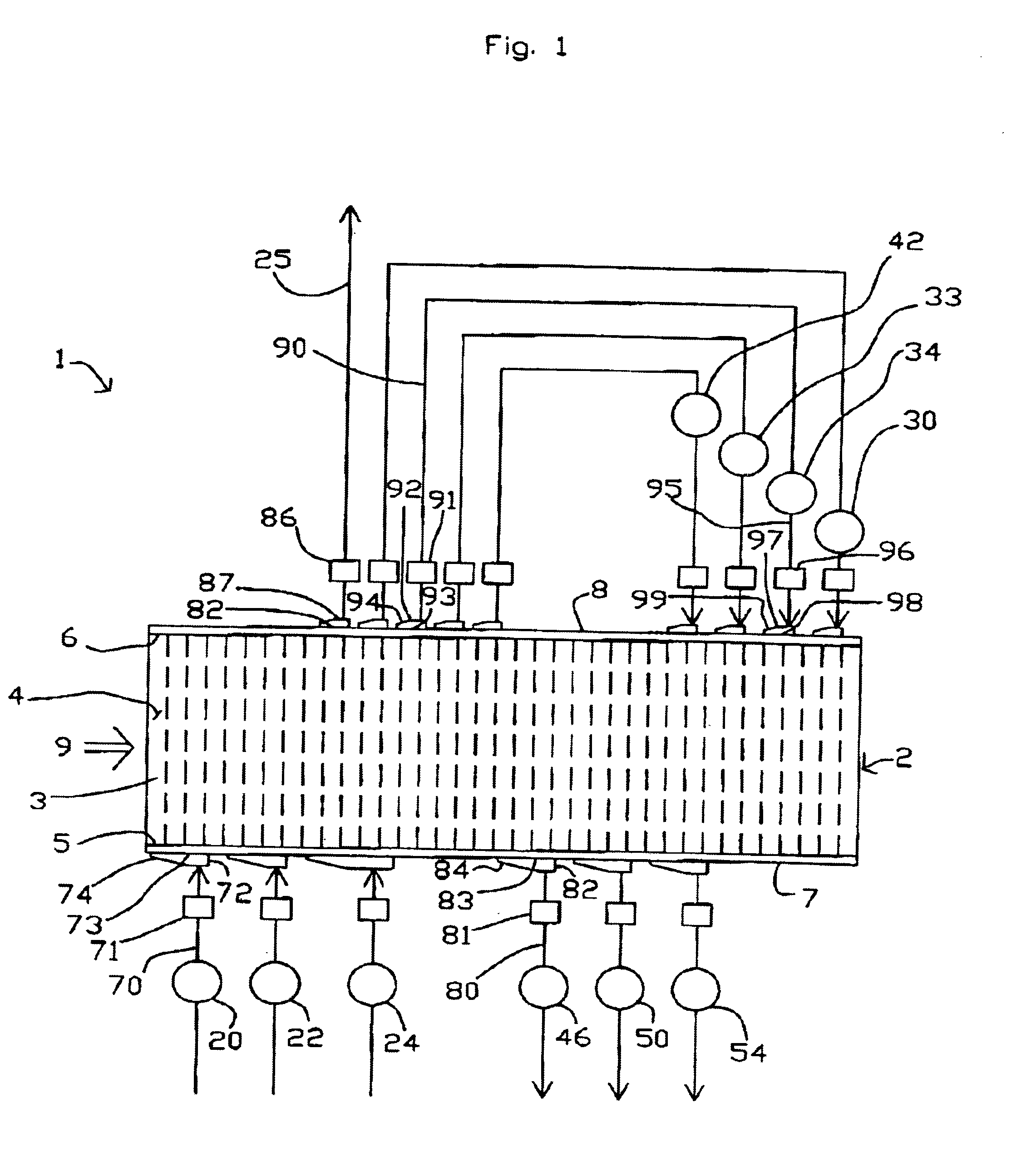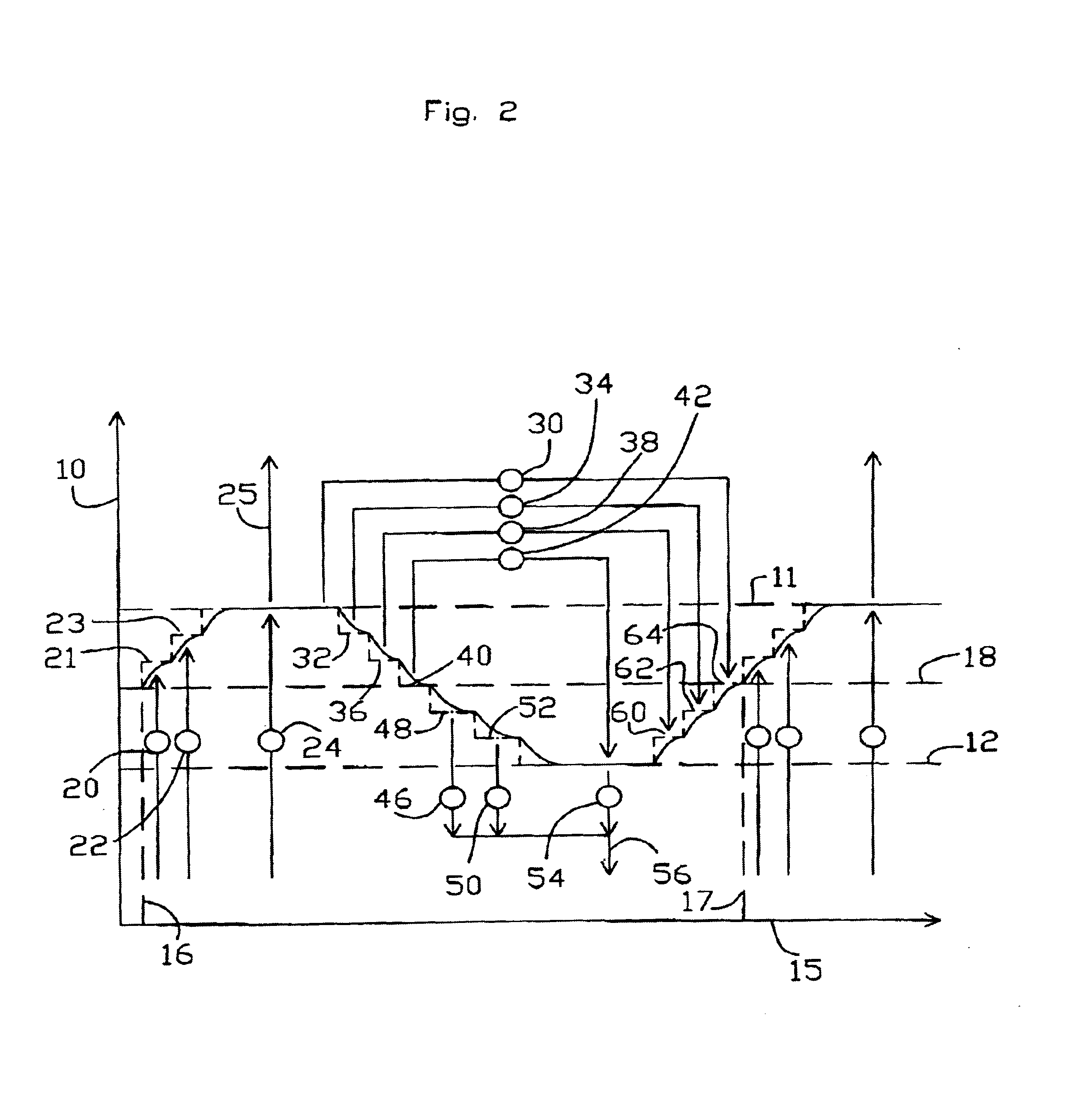Gas separation with split stream centrifugal turbomachinery
a centrifugal turbomachinery and split stream technology, applied in the field of centrifugal turbomachinery, can solve the problems of large fluctuations in overall power demand, low energy efficiency of prior art psa systems, and compromise of compression efficiency, so as to improve gas separation
- Summary
- Abstract
- Description
- Claims
- Application Information
AI Technical Summary
Benefits of technology
Problems solved by technology
Method used
Image
Examples
first embodiment
[0063]the invention will now be described with reference to FIG. 5. FIG. 5 is a transverse view of split stream centrifugal compressor 200. The compressor 200 has a single inlet, but the flow is split to discharge from the single impeller into three separate diffusers and volutes which deliver three compressed gas flows at different total pressures or enthalpies to the PSA apparatus.
[0064]Compressor 200 has a bladed impeller 205 fixed by hub bolt 206 to shaft 207. The impeller 205 is mounted between casing 208 and housing 209. Impeller 205 is a semi-open impeller, with a plurality of blades 210 at preferably equal angular spacing and fixed to the hub 211. The blades 210 extend from impeller eye 212 to impeller tip 213, and may be radial or inclined rearwards (as shown in FIG. 9). Impeller channels 214 are defined between each adjacent pair of blades 210, hub 211 and casing 208. The impeller blades 210 are cut back at steps 215 and 216, at which the channels 214 are narrowed so as to...
embodiment 200
[0069]Whereas a split stream compressor (with a single inlet and three discharge flows at different pressures) was achieved in embodiment 200 by discharging the split flows from the impeller at sequentially increasing radius into separate diffusers, it is also possible to achieve such a compressor by discharging the split flows from the impeller at substantially the same radius but with sequentially steeper blade angles. The impeller is compartmentalized over most of the radial extent of the channels between the impeller blades, so that the flow does not spill between channels having differing blade angle and curvature. However, in one variation, some or even all of the radial extent of the channels is not compartmentalized. In uncompartmentalized sections, preferably the blades are twisted to maintain the axially changing blade angle.
embodiment 300
[0070]FIG. 6 shows the meridional view of split stream compressor embodiment 300. The gas flow passes through the inlet flange 301; inlet 302; impeller 303; three diffuser channels 304,305 and 306; three collector scrolls 307, 308 and 309; and three outlets 310, 311 and 312 in outlet flange 313. Within the impeller 303 there are three compartments 314,315 and 316. Compartments 314 and 315 are separated by partition 318, while compartments 315 and 316 are separated by partition 317. Where any portion of partitions 317 and 318 may be deleted, lines 317 and 318 then represent fluid streamlines in the impeller. Partitions 317 and 318 respectively have leading edges 319 and 320 at the inlet and terminate at impeller outer radius 321. The direction of rotation of the impeller 303 is indicated by arrow 322 in FIG. 7.
[0071]The impeller return path is sealed using labyrinth seals 324. The impeller is connected to the shaft 325 using a hub bolt connection 326. The entire volute is connected t...
PUM
 Login to View More
Login to View More Abstract
Description
Claims
Application Information
 Login to View More
Login to View More - R&D
- Intellectual Property
- Life Sciences
- Materials
- Tech Scout
- Unparalleled Data Quality
- Higher Quality Content
- 60% Fewer Hallucinations
Browse by: Latest US Patents, China's latest patents, Technical Efficacy Thesaurus, Application Domain, Technology Topic, Popular Technical Reports.
© 2025 PatSnap. All rights reserved.Legal|Privacy policy|Modern Slavery Act Transparency Statement|Sitemap|About US| Contact US: help@patsnap.com



